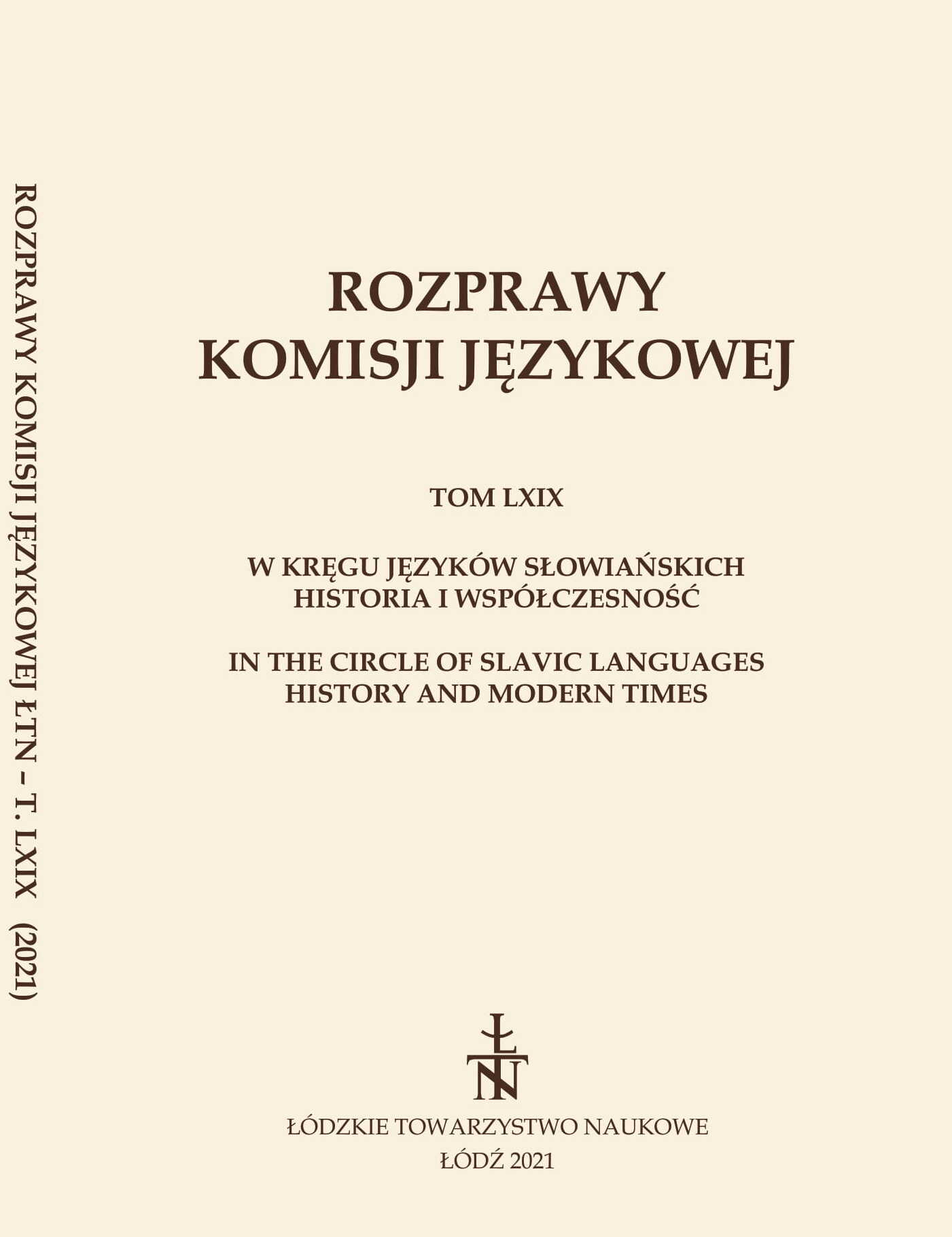The Anthroponymy of the Polish-East Slavic Borderland in the 17th and 18th Centuries According to the Roman Catholic Parish in Zhovkva Selected Issues
DOI:
https://doi.org/10.26485/RKJ/2021/69/10Keywords:
anthroponymy, Polish-East Slavic borderland, ZhovkvaAbstract
Żółkiew (Zhovkva) is located about thirty kilometers north-west of Lwów (Lviv), on the historical route leading to Warsaw. The foundation of the city was on the territory of the village (former ancillary colony) Winniki (Vynnyky) by the Świnia (Svynya) river. Thanks to advantageous town privileges, colonizers from other parts of the country joined Polish and Ukrainian indigenous people. Registers of baptisms of the Roman Catholic parish in Żółkiew (Zhovkva) were held from the first years of it’s existence; analyzed data is extracted from excerption of homogenous manuscript sources of the 17th and 18th centuries – seven parish registers of baptisms (1604–1787). The analyzed anthroponyms show East Slavic influences, especially Polish-Ukrainian linguistic interferences. The personal names of Żółkiew (Zhovkva) and the surrounding area illustrate ethnic and linguistic, religious as well as cultural differentiation of the microregion.
References
Barącz Sadok, 1852, Pamiątki miasta Żółkwi, b.w., Lwów.
Bystroń Jan Stanisław, 1933, Dzieje obyczajów w dawnej Polsce. Wiek XVI–XVIII,ct. I–II, Księgarnia Trzaski, Everta i Michalskiego, Warszawa.
Gąsiorowski Stefan, 2001, Chrześcijanie i żydzi w Żółkwi w XVII i XVIII wieku,cPolska Akademia Umiejętności, Kraków.
Magda-Czekaj Małgorzata, 2011, Wybrane typy słowotwórcze nazwisk (-icz,c-owicz, -ewicz i z podstawowym -k-) okresu średniopolskiego w ujęciu historyczno- społecznym, Instytut Języka Polskiego Polskiej Akademii Nauk, Kraków.
Petrus Jerzy Tadeusz, 1997, Żółkiew i jej kolegiata, Stowarzyszenie Wspólnota Polska. Ośrodek do spraw Polskiego Dziedzictwa Kulturowego poza Granicami Kraju w Warszawie, Warszawa.
Trzeciak Łukasz, 2015, Antroponimia rzymskokatolickiej parafii w Żółkwi z XVII i XVIII wieku (na podstawie ksiąg chrztów), rozprawa doktorska, Uniwersytet im. Adama Mickiewicza w Poznaniu, Wydział Filologii Polskiej i Klasycznej, Poznań, https://repozytorium.amu.edu.pl/handle/10593/14399 (dostęp: 30.04.2021).
Trzeciak Łukasz, 2016, Antroponimia Kresów Południowo-Wschodnich w XVII i XVIII wieku – na przykładzie rzymskokatolickiej parafii w Żółkwi, t. I, Wydawnictwo „Poznańskie Studia Polonistyczne”, Poznań, http://psp.amu.edu.pl/?type=book&id_asset=951 (dostęp: 30.04.2021).
Wolnicz-Pawłowska Ewa, Szulowska Wanda, 1998, Antroponimia polska na Kresach Południowo-Wschodnich: XV–XIX wiek, Slawistyczny Ośrodek Wydawniczy, Warszawa.
Downloads
Published
How to Cite
Issue
Section
License
Copyright (c) 2021 Łódzkie Towarzystwo Naukowe

This work is licensed under a Creative Commons Attribution 4.0 International License.






